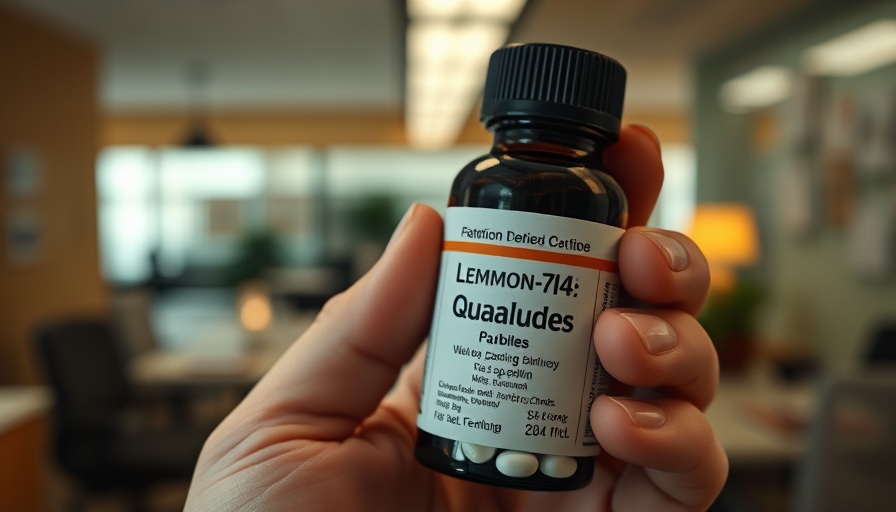
Revisiting Quaaludes: The Rise and Fall of a Cultural Phenomenon
Once considered a go-to medication in the 1970s and 1980s, Quaaludes have become a ghost of pharmaceutical history, largely forgotten yet profoundly influential. Known generically as methaqualone, this sedative was prescribed for insomnia and muscle relaxation but quickly morphed into a party drug—earning the nickname "disco biscuits". The drug's intertwining with pop culture illustrates a captivating tale of medicinal utility gone awry.
The Dark Side of an Ubiquitous Drug
As Quaaludes gained traction in the club scene, they became heavily abused, resulting in a societal stigma that tarnished their reputation. The government had to intervene. In 1985, methaqualone was removed from the market, primarily due to concerns about its addictiveness and the burgeoning recreational use that seemed to overshadow its original therapeutic intent.
How Do Quaaludes Work?
The medicinal effects of Quaaludes stemmed from their ability to interact with gamma-aminobutyric acid (GABA) receptors in the brain, sending calming signals that provided relief from anxiety or insomnia. This is similar to how alcohol impacts the body, making it clear why such a sedative could easily transition into a recreational substance when used irresponsibly.
What's in a Name? Exploring Modern Alternatives
While Quaaludes are largely defunct, similar sedatives still exist today, such as Rohypnol, often referred to as a date-rape drug. None, however, can replicate the exact chemical structure of methaqualone, leading to products on the street that likely contain a mishmash of ineffective and dangerous substances. In Mexico, a modified version still circulates, showcasing how drug culture continuously evolves even while old names fade into obscurity.
The Cultural Impact of Quaaludes
Quaaludes serve as a poignant lesson in the timeline of pharmacology and societal values. Their story is more than merely a tale about a drug; it encapsulates themes of addiction, cultural significance, and the balancing act between medical utility and misuse. Just as this narrative invites reflection on Quaaludes specifically, it compels us to consider how other substances are perceived and utilized in our society.
As we continue to navigate the complexities of drug use and society, understanding the legacy of Quaaludes can inform conversations about modern alternatives and the ever-evolving nature of medication and substance use.
 Add Row
Add Row  Add
Add 



 Add Row
Add Row  Add
Add 

Write A Comment